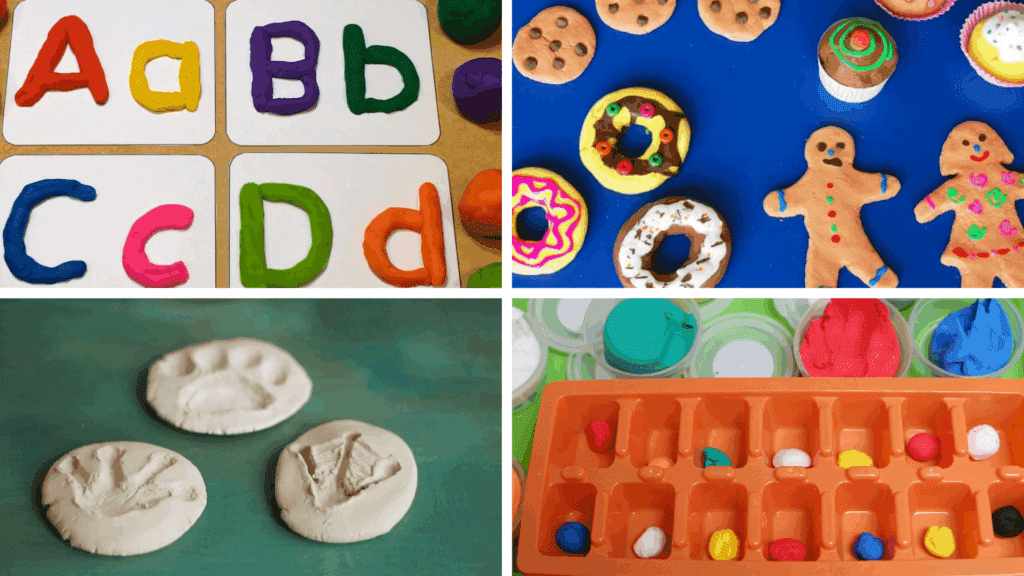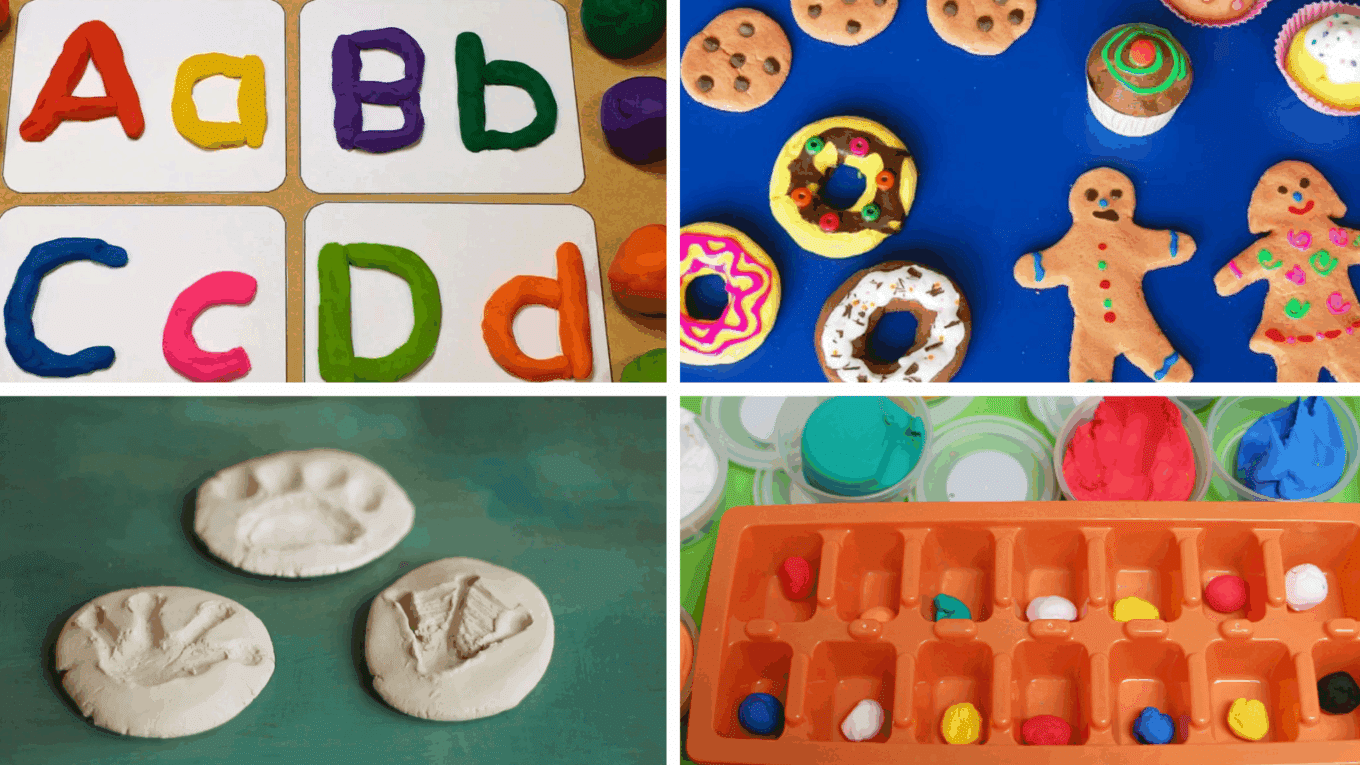Parents know the struggle of finding safe, fun activities for curious kids who put everything in their mouths. Regular play dough often contains chemicals that aren’t safe for tasting, causing worry when little ones sneak a nibble during creative play.
Making taste-safe play dough at home solves this problem. With simple kitchen ingredients, you can create colorful, moldable dough that’s completely safe if sampled by small hands.
This homemade option gives parents peace of mind while children enjoy sensory play.
This blog shows you how to make taste-safe play dough from scratch. You’ll learn about the basic ingredients needed, step-by-step mixing instructions, color-adding techniques, and storage tips to keep your creation fresh.
We’ll also share fun activity ideas that help develop fine motor skills and spark imagination in children of all ages.
Why Taste Safe Play Dough is a Game-Changer for Kids?
Play dough ranks among the most loved children’s activities, bringing joy through squishing, rolling, and creating. For parents with young children who experiment with their mouths, standard play dough presents safety concerns.
The following are a few reasons why taste-safe play dough is a game changer for kids:
- Complete Safety: You won’t need to worry when curious toddlers take a sample during playtime.
- Simple Ingredients: Made with common kitchen items you likely already have at home.
- Cost-Effective: Much cheaper than buying commercial play dough regularly.
- Chemical-Free: Contains no harsh additives or preservatives found in store-bought versions.
- Sensory Development: Offers the same tactile benefits while being mouth-safe.
- Customizable: You control the colors, scents, and textures to match your child’s preferences.
- Allergy-Friendly: Can be made to avoid specific allergens that might be in commercial products.
- Fun Family Activity: Making it together becomes part of the play experience.
- Perfect for Young Children: Ideal for babies and toddlers still in the oral exploration phase.
Steps to Make Taste Safe Play Dough
Crafting taste-safe play dough is a fun and safe way to engage young kids in sensory play, especially for little ones who love to eat everything.
This recipe, inspired by a popular Instagram source, uses simple ingredients to create a soft, pliable dough perfect for toddlers.
Step 1: Gather Your Ingredients

Let’s look into the ingredients and step-by-step process to make it at home.
Ingredients:
1 cup of frosting
3/4 cup of corn starch
- Food Color (Optional)
Start by collecting all the necessary items to ensure a smooth process. You’ll need a cup of frosting and 3/4 cup of cornstarch, plus two bowls for mixing. A measuring cup and spoon will help with accuracy.
Having everything ready prevents interruptions during preparation. This step sets the foundation for a mess-free experience.
Pro Tip: Use a store-bought frosting for convenience, but check for allergens like dairy or nuts if your child has sensitivities.
Step 2: Divide the Frosting and Add Colors

Measure out one cup of frosting and split it evenly into two bowls, roughly half a cup each. This allows you to create two batches or colors of play dough. Be precise to maintain consistency across both portions.
The frosting acts as the base, giving the dough its sweet taste and soft texture. It’s a simple way to prepare for mixing.
Pro Tip: If you want colorful colors, add a drop of food coloring to each bowl before mixing to evenly distribute the hue.
Step 3: Add Corn Starch

Pour 3/4 cup of cornstarch into each bowl of frosting. Start with the full amount to avoid a sticky mess, as less cornstarch can make the dough too runny. Stir gently to combine the ingredients.
The mixture will begin to thicken as the cornstarch absorbs the frosting’s moisture. This step is crucial for achieving the right consistency.
Pro Tip: Sift the cornstarch beforehand to prevent clumps and ensure a smoother texture.
Step 4: Mix the Dough

Use a spoon or your hands to blend the frosting and cornstarch thoroughly. Keep mixing until the dough forms a soft, pliable ball that isn’t sticky.
If it’s too wet, add a pinch more cornstarch; if too dry, add a tiny bit of frosting. The goal is a play dough that holds its shape but is easy to mold. This hands-on step brings the recipe together.
Pro Tip: Knead the dough on a clean surface dusted with cornstarch to prevent sticking and refine its texture.
Step 5: Test and Adjust Consistency

Check the dough’s texture by rolling and squeezing it. It should feel smooth and stretchy without crumbling or sticking to your hands. If needed, adjust by adding small amounts of cornstarch or frosting.
This step ensures the dough is ready for playtime. Once perfect, it’s safe for kids to experiment under supervision.
Pro Tip: Test a small piece with your child to confirm it’s engaging but discourage eating by setting clear play rules.
Activities with Taste Safe Play Dough for Kids

Hands-on play is how young children make sense of their world, touching, feeling, and yes, sometimes tasting their way to understanding.
Taste-safe play dough opens up worry-free creative sessions for curious minds still learning what belongs in their mouths.
1. Animal Tracks and Shapes
Make small balls of dough and flatten them. Show the children how to press toy animals into the dough to create footprints. This helps them learn about animals while practicing pressing and imprinting skills. They can also use cookie cutters to make simple shapes.
2. Color Mixing Station
Set up balls of primary-colored dough (red, yellow, blue) and let children mix them to see what new colors they can create. This introduces basic color theory concepts through hands-on experimentation.
3. Letter and Number Formation
Roll the dough into “snakes” and help children form letters or numbers. This tactile approach makes learning these symbols more memorable than just using pencil and paper. Start with the letters in their name for personal connection.
4. Cookie Cutout Fun
Give your child cookie cutters in different shapes. Let them press the cutters into flattened play dough to create “cookies.” They can decorate their creations with safe items like dry rice, beans, or pasta pieces.
5. Texture Hunt
Press different textured items (pine cones, shells, mesh, buttons) into the dough to create patterns. Children can feel the impressions with their fingers, building sensory awareness and descriptive language skills.
Wrapping It Up
Homemade taste-safe play dough brings both fun and safety to your child’s playtime. This simple creation from your kitchen removes the worry of what might happen when curious little ones take a bite.
With the activities we’ve shared, you can turn ordinary dough into learning moments that build motor skills, spark creativity, and create lasting memories. The beauty of this approach is its flexibility to adapt colors, scents, and textures to match your child’s interests or the seasons.
What makes this option special is how it connects play with peace of mind. As parents, we want to say “yes” to messy, creative play without constant supervision or concern.
Why not mix up a batch this weekend? The smiles, giggles, and proud “look what I made!” moments are worth the few minutes of preparation.
Your child gets to experiment freely, and you get to relax knowing everything is completely safe.




